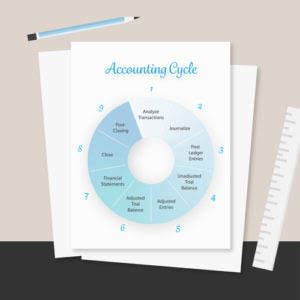
Current liabilities encompass short-term obligations such as accounts payable, short-term debt, and other liabilities due within the next 12 months. Working Capital Ratio is a measure of business liquidity, calculated simply by dividing your business’s total current assets by its total current liabilities. In other words, it measures the health of your company’s short term finances. It is important to note that a high working capital ratio does not necessarily indicate financial stability.
Example of a cash conversion cycle
Learn financial statement modeling, DCF, M&A, LBO, Comps and Excel shortcuts. Companies with significant working capital considerations must carefully and actively manage working capital to avoid inefficiencies and possible liquidity problems. One nuance to calculating the net working capital ratio meaning working capital (NWC) of a particular company is the minimum cash balance—or required cash—which ties into the working capital peg in the context of mergers and acquisitions (M&A). Let us calculate and conduct a working capital ratio analysisfor Colgate from the images above.
Working capital ratio formula
- The cash conversion cycle provides important information on how quickly, on average, a company turns over inventory and converts inventory into paid receivables.
- Get instant access to video lessons taught by experienced investment bankers.
- If the following will be valuable, create another line to calculate the increase or decrease of net working capital in the current period from the previous period.
- NWC is most commonly calculated by excluding cash and debt (current portion only).
- If a company continues to have low working capital, or if cash flow continues to decline, it may have serious financial trouble.
- An example of this would be an online software company where customers download the product after purchase.
- A company with positive working capital generally has the potential to invest in growth and expansion.
For example, cloud-based accounting software can provide real-time monitoring of a company’s cash flow, making it easier to identify areas for improvement. Automation tools can also streamline cash collection and payment processes, reducing the time and effort required for these tasks. Slipping below 1.2 could mean the business will struggle to pay its bills, depending on its operating cycle and how quickly it can collect receivables. Below 1, a business is operating with a net negative working capital position.
- The key consideration here is the production cycle, since this is how long it will take the company to generate liquid assets from its operations.
- For example, below is a screenshot of Johnson and Johnson’s (JNJ) balance sheet data.
- An otherwise profitable company may also run out of cash because of the increasing capital requirements of new investments as they grow.
- Working capital as a ratio is meaningful when compared alongside activity ratios, the operating cycle, and the cash conversion cycle over time and against a company’s peers.
How to Calculate Working Capital Ratio
Another financial metric, the current ratio, measures the ratio of current assets to current liabilities. Unlike working capital, it uses different accounts in its calculation and reports the relationship as https://www.bookstime.com/ a percentage rather than a dollar amount. As it so happens, most current assets and liabilities are related to operating activities (inventory, accounts receivable, accounts payable, accrued expenses, etc.).

On the other hand, too much surplus cash is not an efficient use of capital. Both of these numbers can be found on the balance sheet, which is listed on a company’s 10-Q or 10-K filing, its investor relations page, or on financial data sites like Stock Analysis. Negative working capital is never a sign that a company is doing well, but it also doesn’t mean that the company is failing either.
How Do You Calculate Working Capital?

The inventory turnover ratio
- The working capital ratio is calculated by dividing a company’s current assets by its current liabilities.
- In conclusion, working capital ratio is a critical financial metric for businesses to monitor and manage effectively.
- It measures the firm’s ability to cover its current liabilities using its current assets.
- In simple terms, working capital is the net difference between a company’s current assets and current liabilities and reflects its liquidity (or the cash on hand under a hypothetical liquidation).


